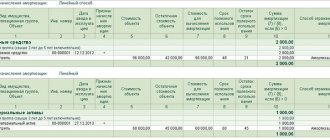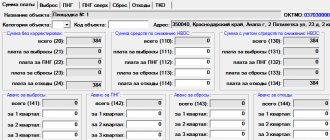How to respond to a demand
The time limit for a response is counted from the date of receipt of the request for clarification . If the company reports on paper, the demand will be sent to it by mail. The date of its receipt is considered to be the sixth day from the date of sending the registered letter (paragraph 3, paragraph 4, article 4 of the Tax Code of the Russian Federation).
If an organization or individual entrepreneur is required to report electronically, the requirement from the tax office will be sent to them through the operator. In this case, the deadline for responding to the request is counted from the date of sending the acceptance receipt. But it will not be possible to confirm receipt later in order to gain time: the Tax Code gives the same 6 working days for sending the receipt (clause 5.1 of Art. Tax Code of the Russian Federation). If you do not send the receipt on time, within the next 10 working days the tax authorities may block the taxpayer’s account (clause 2, clause 3, article of the Tax Code of the Russian Federation).
After sending the receipt, the taxpayer has 5 working days to send explanations or an updated declaration (Clause 3 of Article of the Tax Code of the Russian Federation). For being late in responding to a request, the taxpayer may be fined 5,000 rubles, and for a repeated violation within a year - 20,000 rubles (Article 129.1 of the Tax Code of the Russian Federation). The liability of citizens and officials is up to a fine of up to 1,000 or up to 4,000 rubles, respectively (Clause 1 of Article 19.4 of the Code of Administrative Offenses of the Russian Federation).
Extern notifies if the client is threatened with account blocking or a fine, or helps to rectify the situation
Finally, if you ignore the requirement of the Federal Tax Service, this may attract unwanted attention from tax authorities to the organization, up to the appointment of an on-site audit.
We’ll tell you how to proceed further depending on what you decide to do: file an updated declaration or justify losses.
How to take into account losses from previous years that are identified in the current period
Sometimes losses (expenses) of previous years are identified in the current period. This can happen if the documents confirming the expenses “reached” the accounting department after the end of the tax period. Or another common situation: last year the company supplied customers with low-quality goods, and the money had to be returned (letter of the Ministry of Finance of the Russian Federation dated July 25, 2016 No. 03-03-06/1/43372).
When calculating the current income tax, such amounts can be included in non-operating expenses (clause 2 of Article 265 of the Tax Code of the Russian Federation, paragraph 1 of Article 54 of the Tax Code of the Russian Federation). But this can only be done for three years. The Ministry of Finance and the Federal Tax Service believe that accounting for such expenses (losses) is closely related to the provisions on the return and offset of overpayments of taxes, and therefore cannot exceed 3 years.
For example, in the third quarter of 2022, the company transferred 10,000 rubles to the buyer for low-quality doors delivered in the second quarter of 2022. If in 2022 there were no other non-operating expenses, and at the end of the year a profit was made, then in the income tax return you will need to write down:
- line 300 of Appendix No. 2 to sheet 02 - 10,000 rubles;
- line 301 of Appendix No. 2 to sheet 02 - 10,000 rubles;
- line 040 sheet 02 - 10,000 rubles.
We reflect in the income tax return the losses of previous years that were identified in the current period. Fill in line 040 of sheet 02.
We reflect in the income tax return the losses of previous years that were identified in the current period. We fill in lines 300 and 301 of Appendix 2 to sheet 02.
Option 2. Send explanations
If you are not going to revise the declaration, you need to draw up a convincing justification for the amount of losses. It is drawn up in any form, indicating the reasons that resulted in the losses.
Let's look at typical situations in which the tax office requests clarification and provide sample responses to the request.
Based on the results of the reporting (tax) period, a loss was received
This often happens with newly registered businesses or organizations that are developing a new direction and investing a lot of money in the purchase of equipment, real estate, materials, etc.
“Oldies” are also not insured against losses. The reason may be a seasonal drop in demand, a large one-time expenditure, bankruptcy of a counterparty, changes in contract terms, etc.
If the loss was incurred due to coronavirus and the self-isolation regime, there are no specific explanations. The lack of income is understandable, since many companies could not work, but still paid wages, rent, utilities, etc. In the explanation, describe the circumstances and refer to decisions of federal, regional and local authorities, for example, Presidential decrees on non-working days dated March 25. 2020 No. 206, dated 04/02/2020 No. 239.
Loss from the sale of purchased goods
Explanations may also be requested when the loss in the declaration is shown only on the sale of purchased goods. In this case, the tax authorities suspect that the company violated the rules for accounting for expenses when selling goods (Article 268 of the Tax Code of the Russian Federation) or incorrectly distributed expenses into direct and indirect (Article 320 of the Tax Code of the Russian Federation).
First of all, check whether you really sold the goods for less than you bought. If you find an error, please correct it. If everything in the declaration is correct, prepare an explanation.
Reducing the tax base due to losses from previous years
When checking a profitable declaration, the tax office may also require an explanation of losses. This happens if the tax base is reduced in the report due to losses from previous years. This right of tax authorities is not directly stated in the law, but arbitration practice shows that courts can support the desire of tax authorities to interpret clause 3 of Art. The Tax Code of the Russian Federation is expansive (Resolution of the Arbitration Court of the Eastern Military District dated January 18, 2016 N F01-1806/2015 in case No. A11-372/2015).
Report on profits and other taxes via Extern for free
Formation of loss
A loss may result from:
- excess of expenses over income for financial and economic activities and non-operating operations;
- identification of significant errors of previous years in the reporting year (clause 1, clause 9 of PBU 22/2010);
- changes in accounting policies (clause 16 of PBU 1/2008).
The loss received in accounting at the end of the year is reflected by posting to the debit of account 84, the subaccount “Uncovered loss of the current year” and the credit of account 99 “Profits and losses”.
EXAMPLE.
HOW IS THE LOSS FOR THE CURRENT YEAR FORMED In the reporting year, Passiv LLC received revenue from sales of products (excluding VAT) in the amount of RUB 360,000.
The cost of products sold was RUB 290,000. The amount of other expenses is 80,000 rubles. In the reporting year, Passive accrued income tax to the budget in the amount of 15,000 rubles. Passive did not create any reserves or special-purpose funds. At the end of the year, the following data will be reflected in the financial results statement: - on line 2110 “Revenue” - 360,000 rubles; - on line 2120 “Cost of sales” - (290,000 rubles); - on line 2200 “Profit (loss) from sales” - 70,000 rubles. (RUB 360,000 – RUB 290,000);— on line 2340 “Other expenses” – (RUB 80,000);— on line 2410 “Current income tax” – (RUB 15,000);— on line 2400 “Net profit (loss)” – (RUB 25,000). The company’s owners did not make decisions on repayment of the resulting loss. When reforming the balance sheet, the following entry will be made: DEBIT 84 CREDIT 99
- 25,000 rubles. – the uncovered loss of the reporting year is written off. Line 1370 of the Liability balance sheet for the reporting year will reflect a loss in the amount of 25,000 rubles. It is indicated in parentheses.
Read also “Annual report 2016 will protect you from liability”
Ways to write off losses
If a loss is received at the end of the reporting year, the accountant should inform the manager about the need to convene a general meeting of participants (shareholders) so that they can make a decision regarding the resulting loss.
The loss (both previous years and the current year) can be covered by:
- retained earnings from previous years;
- reserve capital (fund);
- targeted contributions from the owners of the company.
If the available sources to repay the uncovered loss of the reporting year are not enough, the uncovered loss is left on the balance sheet.
However, an organization that has suffered a loss at the end of the year should pay special attention to the value of its net assets.
Read in the taker
Those who show losses in the income statement will be called to a loss-making commission. Who can be called, look in the berator
We monitor the value of net assets
When, at the end of the financial year following the second financial year or each subsequent financial year, at the end of which the value of the company’s net assets turned out to be less than its authorized capital, the current legislation requires, and the company is obliged to make a decision to reduce the authorized capital to the value of the net assets (clause 6, Article 35 of the Federal Law of December 26, 1995 No. 208-FZ “On Joint Stock Companies”, paragraph 4 of Article 30 of the Federal Law of February 8, 1998 No. 14-FZ “On Limited Liability Companies”). This must be done no later than six months after the end of the relevant financial year.
Another solution may be the decision to voluntarily liquidate the company.
Read in the taker
The algorithm for calculating net assets was approved by order of the Ministry of Finance of Russia dated August 28, 2014 No. 84n, you can view it in the browser
The operation of reducing the size of the authorized capital to the value of the company's net assets is a legal way to repay the resulting loss. At the same time, the indicator of retained earnings increases.
Can the tax office require documents to confirm losses?
Along with explanations, tax authorities often require additional information: an itemized breakdown of costs, accounts payable broken down by counterparty, indicating the time and reason for their occurrence, accounting and tax registers, primary documents, and even sometimes a business plan for making a profit. Is the taxpayer obligated to comply with such requirements?
When giving explanations, including regarding losses, the taxpayer has the right to additionally submit to the tax authority extracts from tax and accounting registers and other documents confirming the accuracy of the data included in the tax return (Clause 4 of Article of the Tax Code of the Russian Federation). At the same time, tax authorities do not have the right to request from the taxpayer additional information and documents not provided for in the article of the Tax Code of the Russian Federation (clause 7 of Article of the Tax Code of the Russian Federation).
The law clearly states that the taxpayer may submit additional documents, but is not required to do so. The official website of the Federal Tax Service states: “On this basis, we will consider it proven that within the framework of the procedure for requesting explanations in accordance with paragraph 3 of Art. Tax authorities of the Russian Federation do not have the right to demand the provision of any documents.”
Nevertheless, clause 8.3 of Art. The Tax Code of the Russian Federation establishes the right of the tax authority to request primary documents and tax accounting registers during a desk audit of an updated declaration filed two years after the deadline for filing the declaration, if it reduces the amount of tax or increases the amount of loss.
How to justify losses to tax authorities
If an organization has submitted a “negative” declaration, or even several in a row, this does not mean that inspectors will immediately appear at the doorstep of the office.
Most likely, the tax authorities will first request written explanations or call the head of the commission.
And the further situation largely depends on how weighty the businessman’s arguments are.
You should not “unsubscribe” with general phrases about the economic crisis, falling demand, etc. The explanation must be extremely specific and characterize the situation at this particular enterprise.
The causes of losses include, for example, the following:
- Recent start of activity.
- Launch of new production.
- Significant increase in supplier prices.
- Termination of contracts with large counterparties.
- Force majeure (accident, fire, etc.)
All specified reasons must be documented. For example, if we are talking about relationships with counterparties, then you need to attach copies of contracts, letters and price lists; in emergency situations, acts of government bodies, etc. will be confirmed.
If a businessman managed to justify his losses, then he can use them in the future for tax optimization. We will show you how to do this in the next section.
What happens if the explanations do not seem convincing to the tax authorities?
In this situation there are three options:
- The taxpayer's official will be called to the “loss commission” (clause 4, clause 1, article of the Tax Code of the Russian Federation).
- Based on the results of the desk audit, additional taxes will be assessed.
- They will come to the taxpayer with an on-site inspection. An audit can be scheduled even after one unprofitable declaration, despite the fact that in the “Concept of the planning system for on-site tax audits” the criterion for assigning an audit in connection with losses is the reflection of losses in the reporting over several tax periods. But such a development is unlikely.
How much loss can be written off?
If the company's expenses exceed income, a loss arises (clause Art. 274 of the Tax Code of the Russian Federation). In the period when the company made a profit, the loss can be deducted from the tax base. But there are several restrictions:
- The tax base of the reporting (tax) period can be reduced by no more than 50% (clause 2.1 of Article 283 of the Tax Code of the Russian Federation).
- You can write off only those losses that are reflected in the declarations starting from 2007.
- There are no restrictions on the transfer period: you can transfer until the loss amount is completely written off.
- If losses were incurred in several tax periods, they must be transferred strictly in calendar order.
An example of calculating the amount of loss that can be written off
In the reporting for 2012, the company reflected a loss of 78,000 rubles, and for 2014 - 8,000 rubles.
When calculating taxes for 2012-2020, the company did not take into account the losses received. In 2022, the company made a profit of 165,000 rubles. Let's calculate the maximum amount of loss that an organization can write off at the end of 2022 (subject to the 50% limit).
165,000 × 50% = 82,500 rubles.
The tax base for income tax in 2022, taking into account the transferred loss, will be 82,500 rubles.
Thus, in 2022, the organization took into account losses from previous periods in the following amount:
- loss in 2012 in the full amount of 78,000 rubles;
- loss in 2014 partially in the amount of 4,500 rubles.
The organization can transfer the remainder of the loss for 2014 in the amount of 3,500 rubles (8,000 - 4,500 = 3,500 rubles) to 2022 if it makes a profit.








